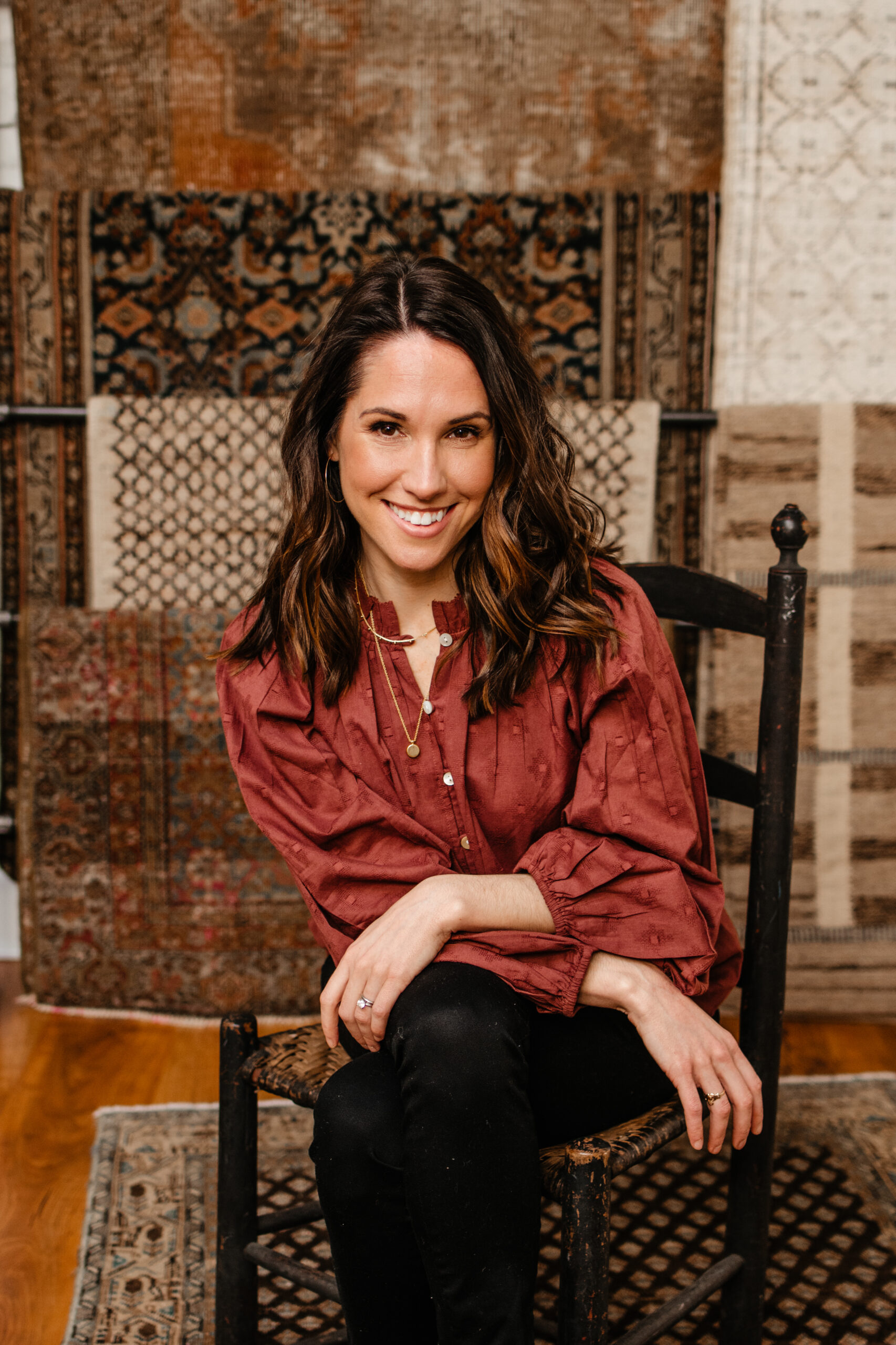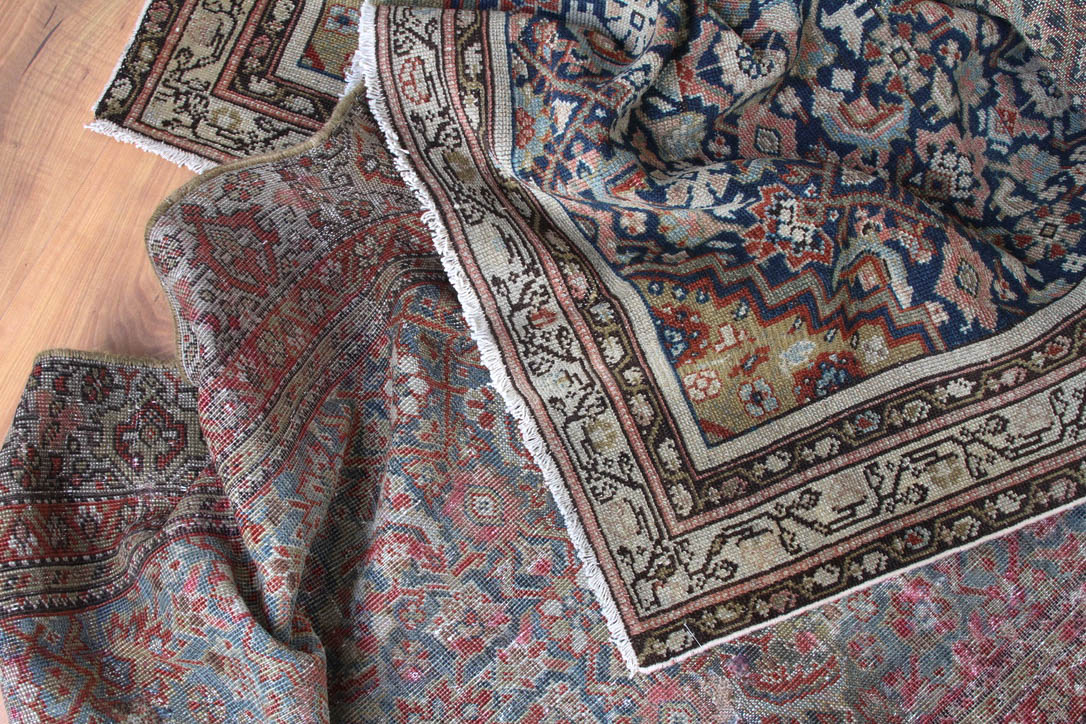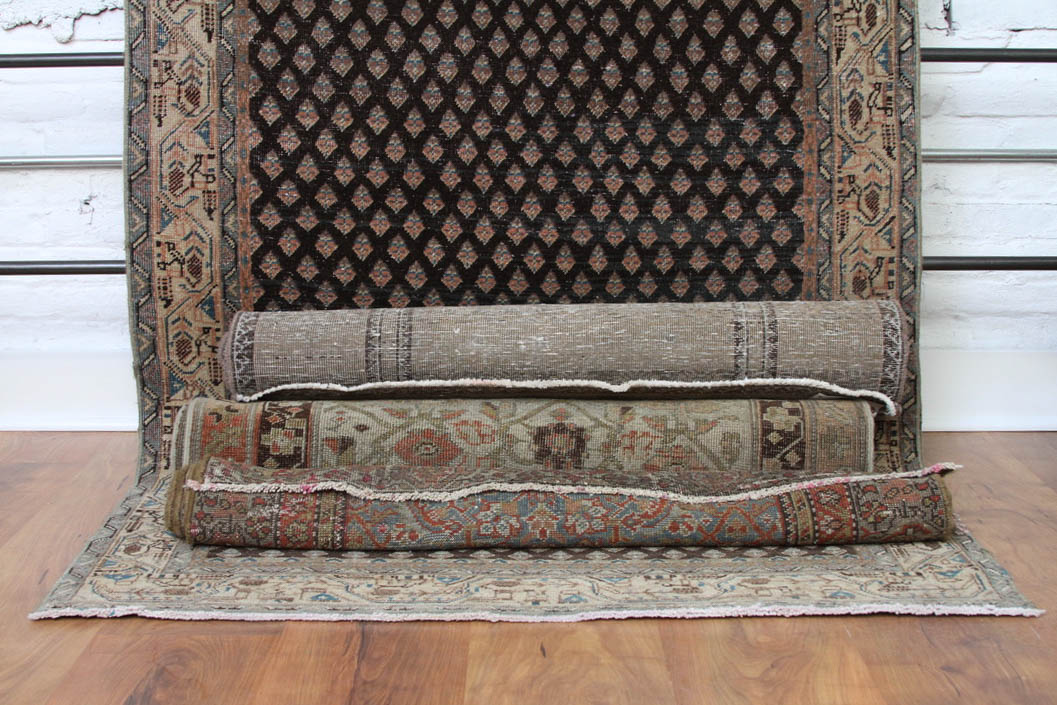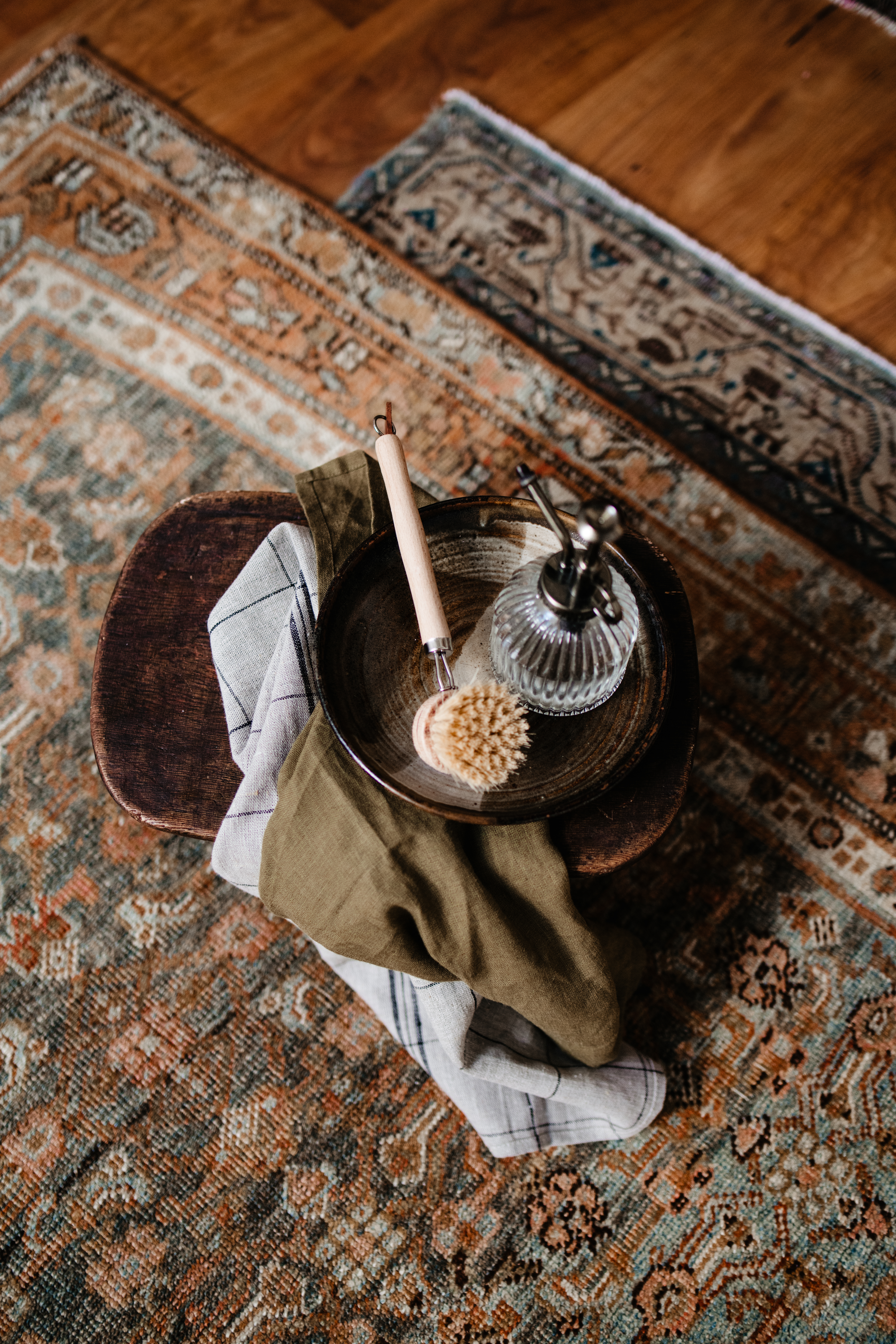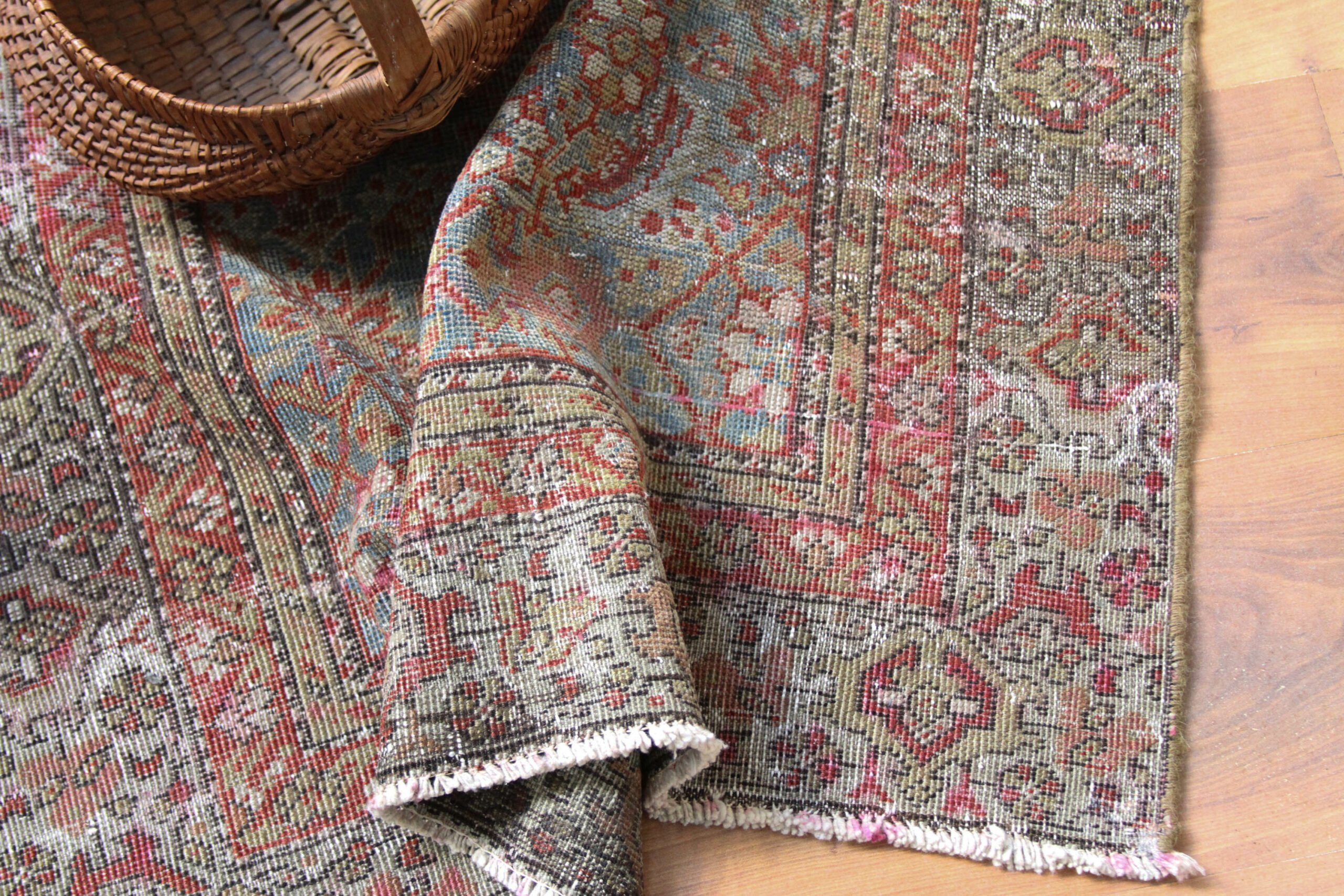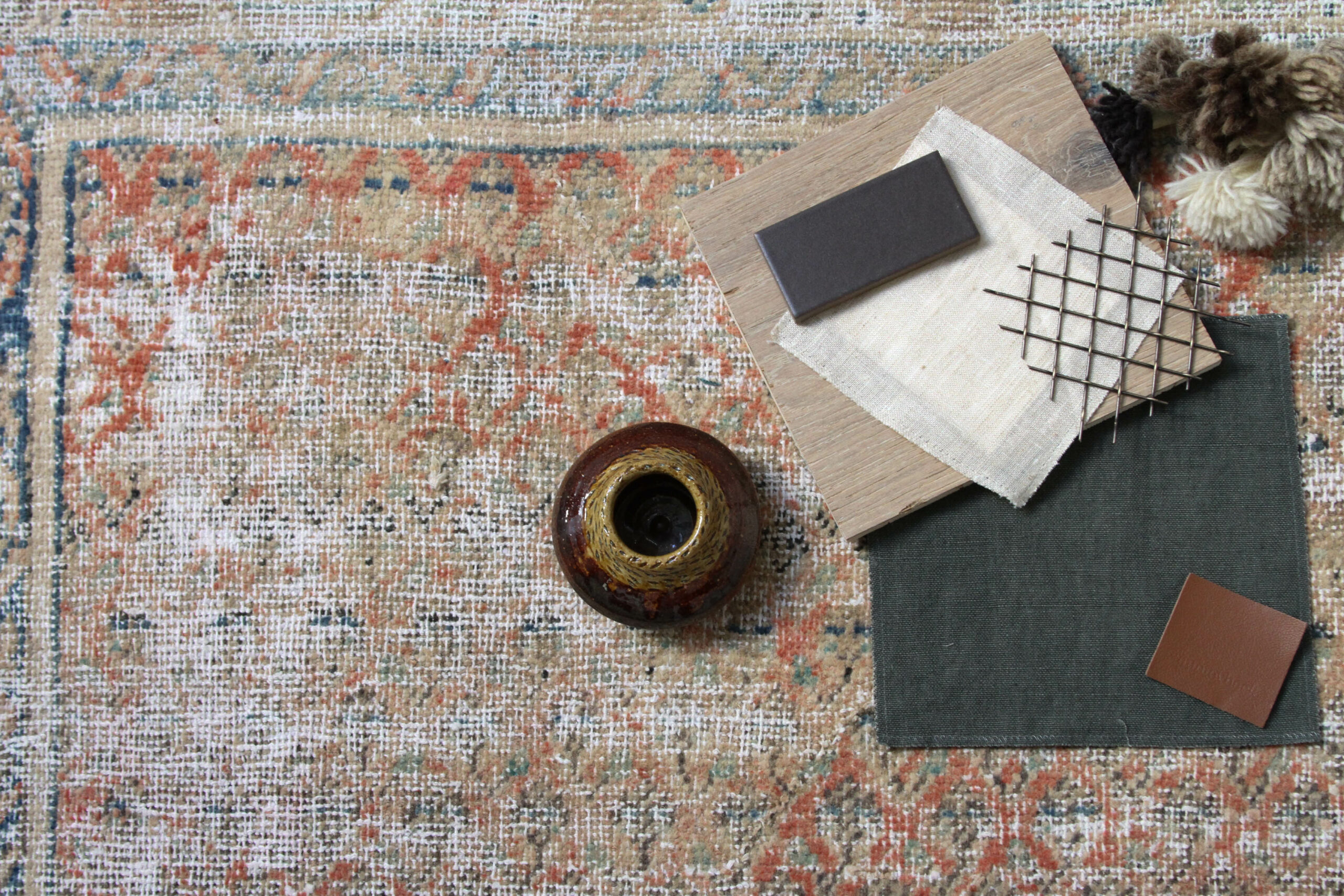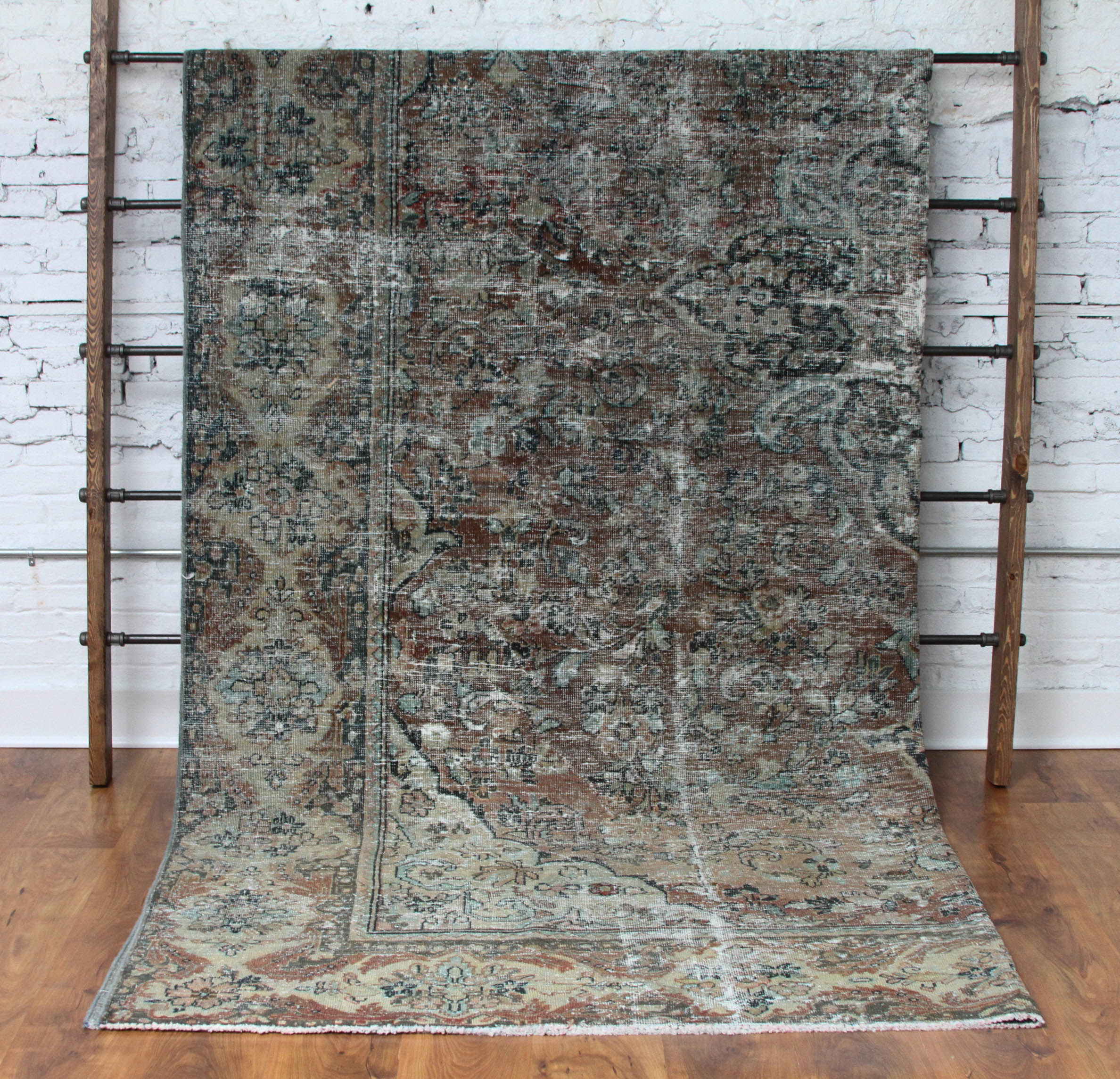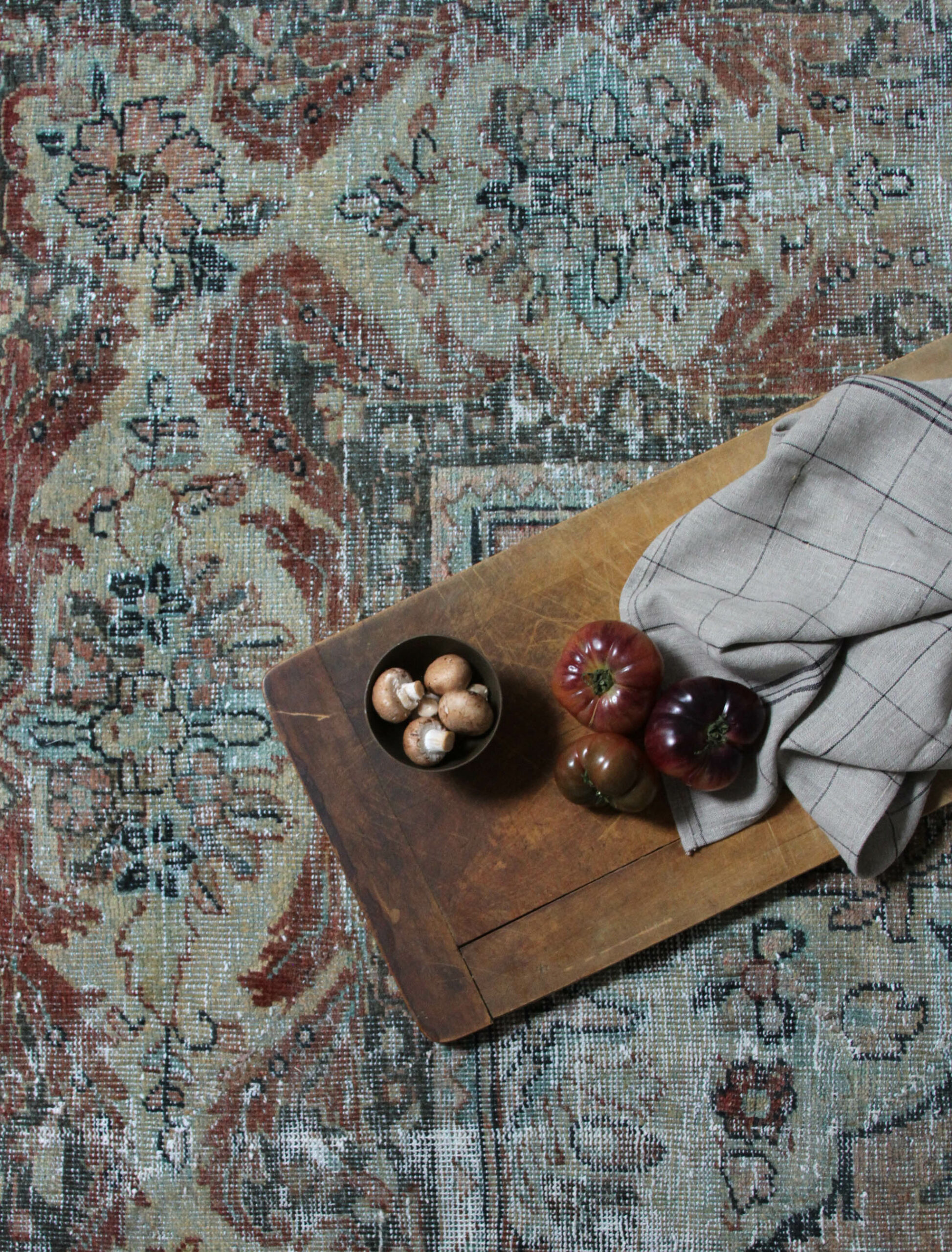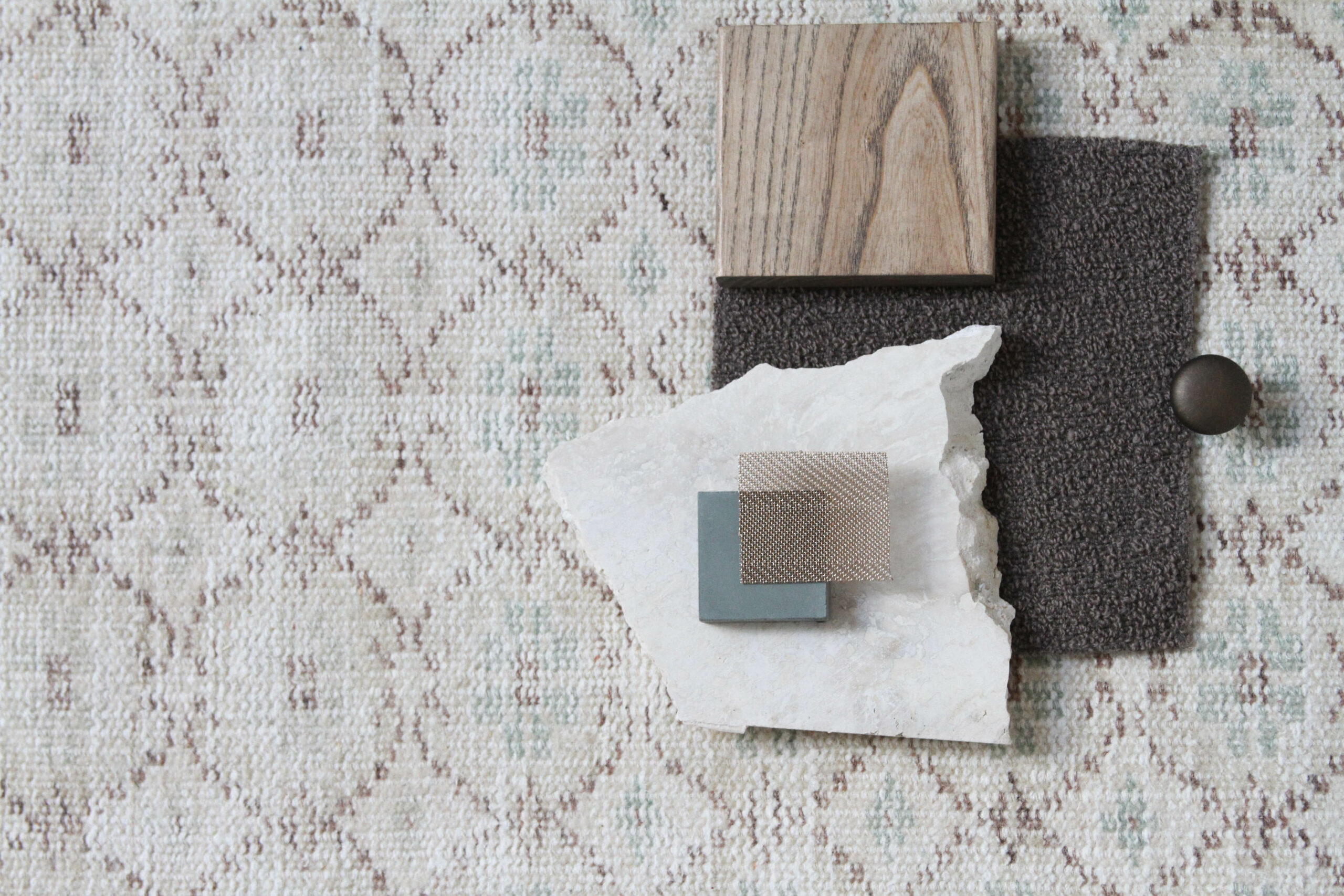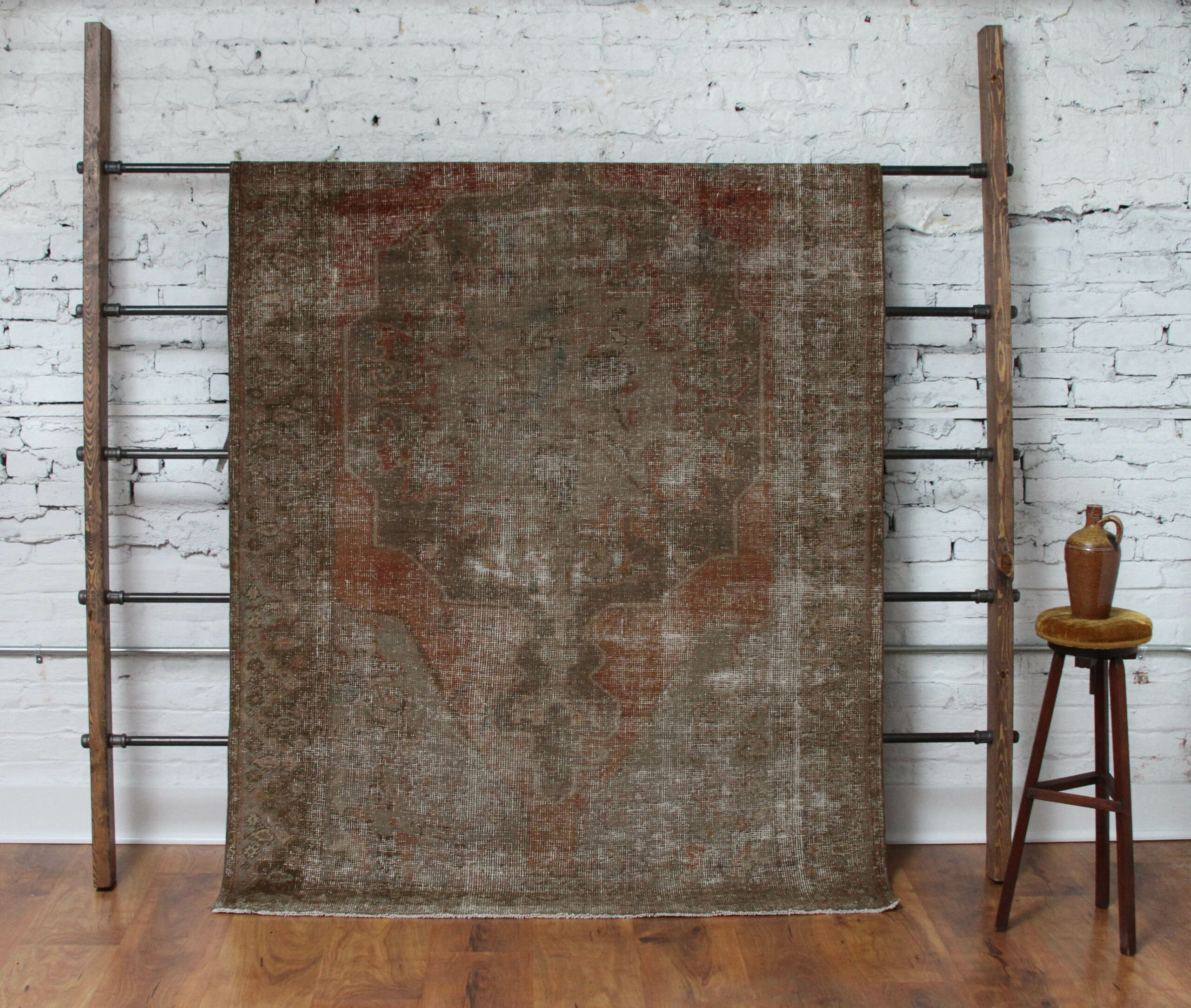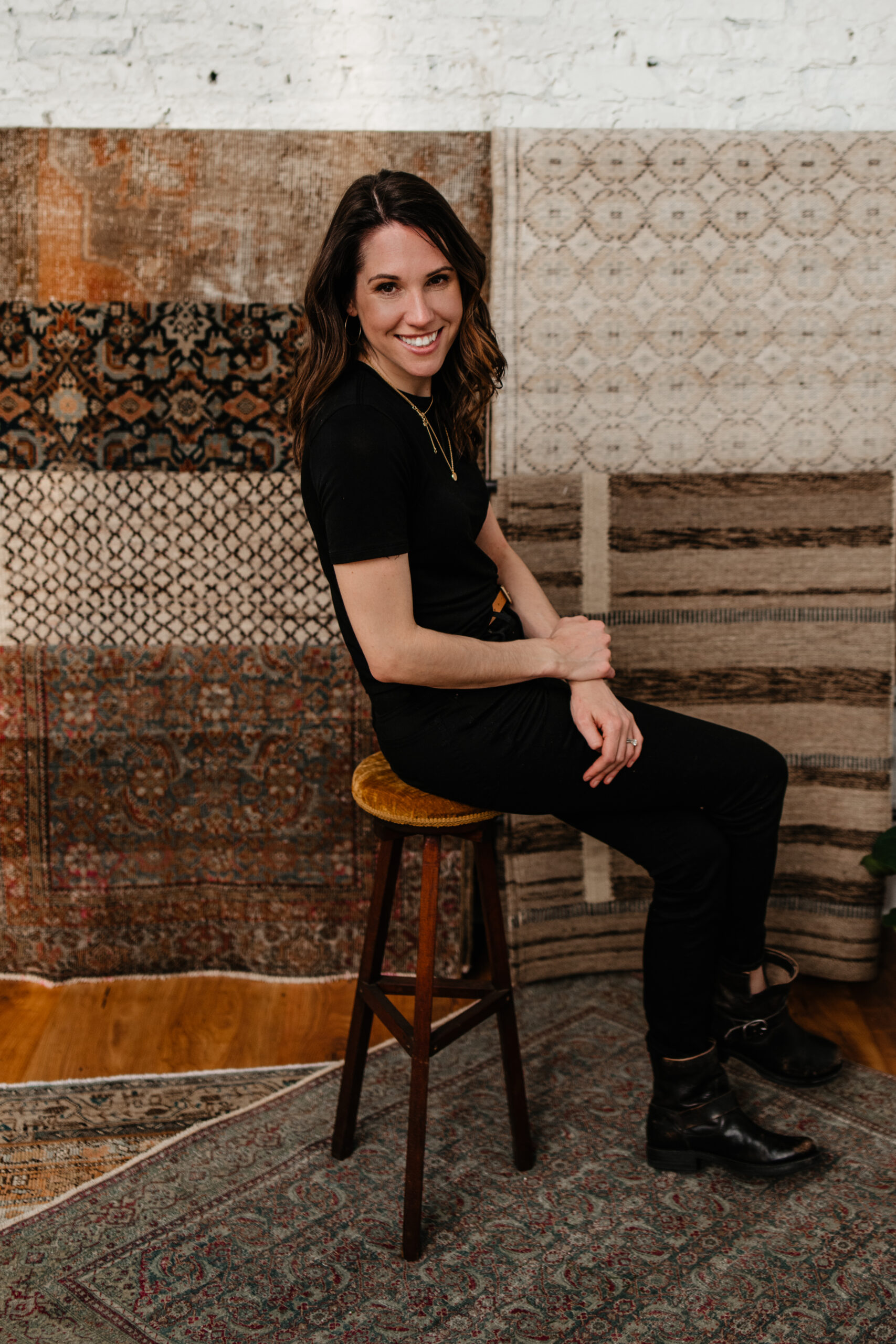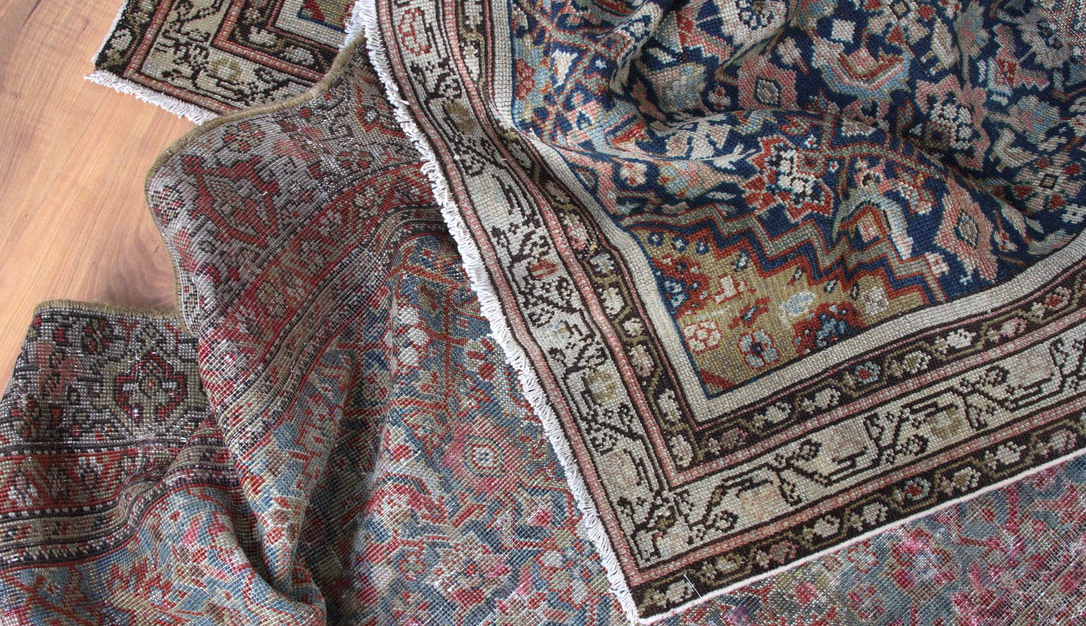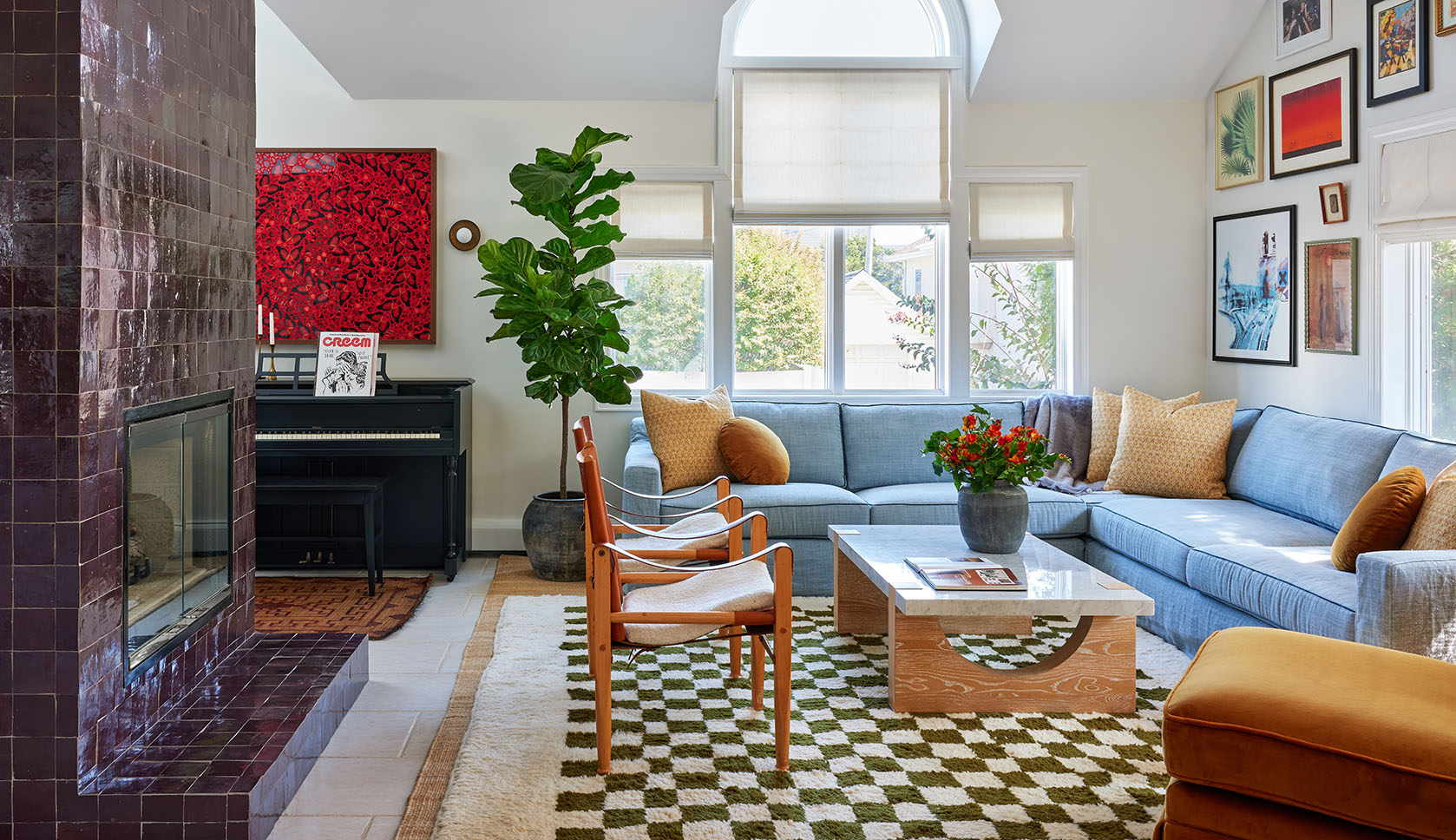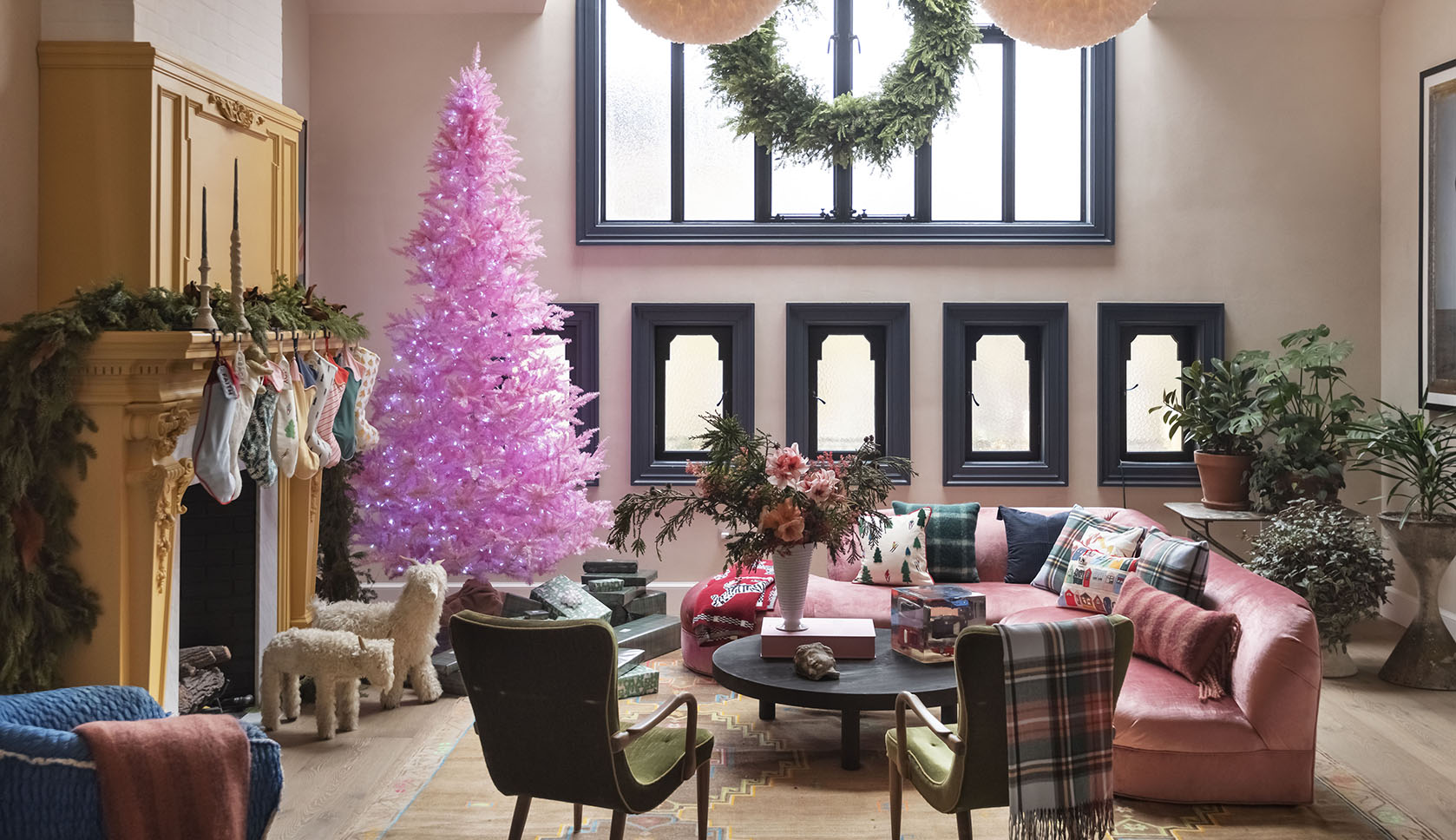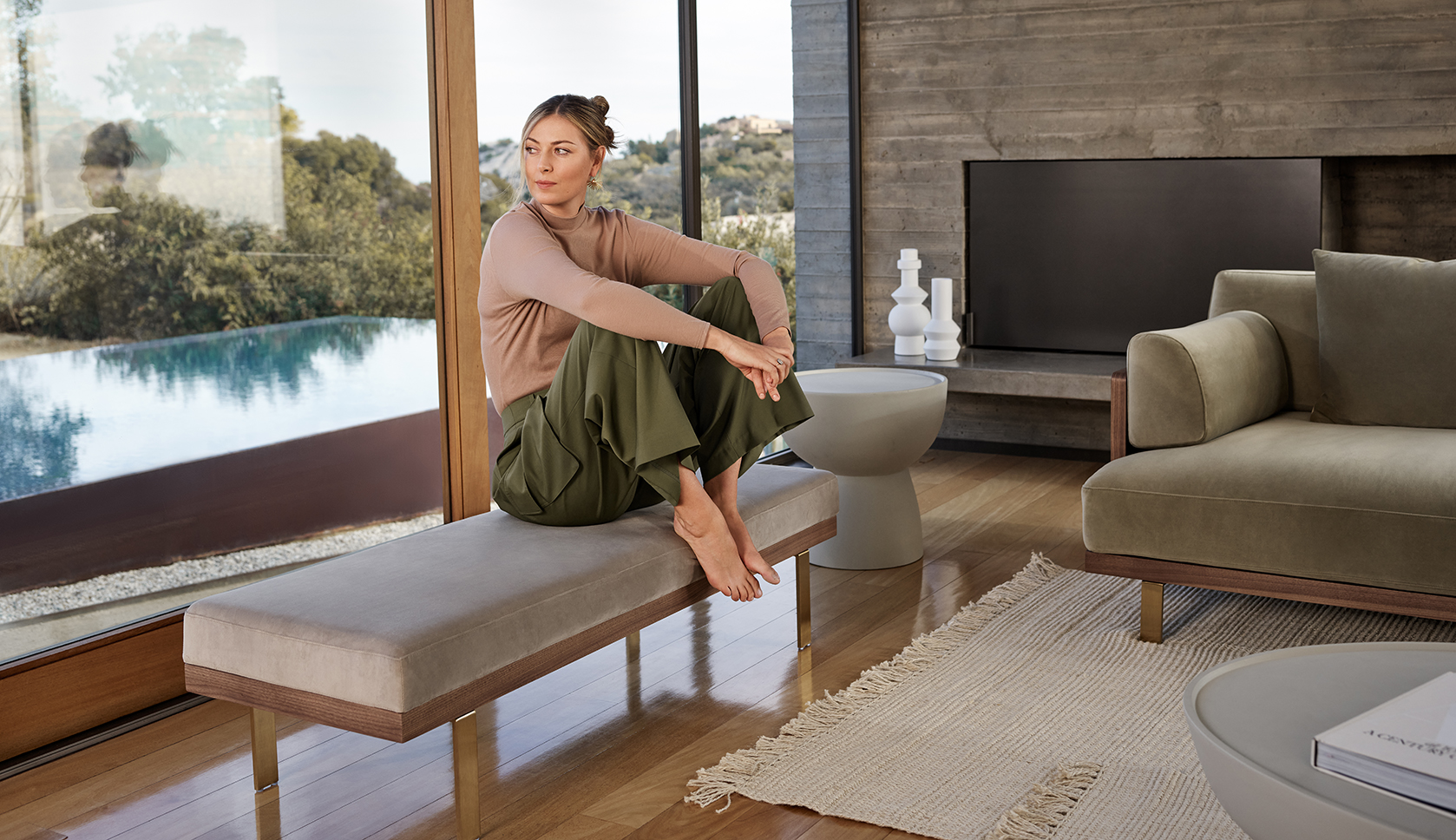After the past year (!) spending so much of our time at home, we can all agree that creating an inviting and inspiring home ambience has taken on new significance – and Eteria founder and principal designer for Ursino Interiors, Maureen Ursino, believes selecting a rug is the first step in setting that tone. The most frequent questions she receives on Instagram over the past year related to the vintage rugs she was using for various projects, so she decided she wanted to provide her audience access to these rugs that typically only members of the trade would see. Enter Eteria: an online boutique that offers curated batches of authentic vintage rugs, as well as resources to help coach a first-time vintage rug buyer. The first batch drops today (March 25th), and new rugs will be added every six to eight weeks. To celebrate the launch, we sat down with Maureen for a vintage rug buying 101 tutorial.
This is not your grandmother’s vintage!
People often hear “vintage rug” and think of their grandmother’s formal living room that got used twice a year. That’s actually the complete opposite of the truth. Our vintage rugs are made from 100% hand-knotted wool so they’re incredibly durable (read: good for high-traffic areas and family- and pet-friendly). Put a vintage runner in your kitchen or mudroom, put a vintage area rug in a family room or playroom. They’ll add soul to your spaces and with proper care can last for years (or generations!) to come.
What’s in a name?
A lot of words get thrown around in the rug business- vintage, antique, heirloom. What are the differences? Eteria is carrying vintage rugs- meaning at least 50 years old, but less than 100 years old. They are all hand-knotted (handmade) from traditional rug markets such as Iran, Turkey or Afghanistan. Generally speaking an antique is something that is more than 100 years old. Heirloom refers to the fact that it was previously owned, versus how old it is. So something can be vintage and heirloom.
Size matters.
Selecting the proper size rug is the single most important part of the process. We created several diagrams on our site to help guide you for various rooms. For example, a hallway runner should extend ¾ of the hallway length, and should have 4-5 inches of space from the wall on each side of the rug. For a dining room, choose a rug that extends about 2 feet on each side of your table – you should be able to fully pull the chairs out on the rug.
Color quandaries?
Color is complicated! I took entire courses at design school devoted to the topic. Here are some general tips to guide your selection:
- Generally speaking, the color of the rug grounds the room. If your room is currently unfurnished, think about your color preferences- is it something neutral, or more colorful? From there, the rug will dictate the overall color palette. Note: remember that the colors of vintage rugs are desaturated, so none of them will be overly bold.
- If the room is furnished, consider what colors and patterns already exist in the space, and then choose a rug that complements them. For example, if you have a beige sofa and leather armchair, you might want to select a rug with a little color to add some depth and warmth. Or, pick a rug with neutral colors but a pattern to add visual interest.
You may be thinking, “I know what color I like, but I don’t know what colors go well with it?” This is where you make a color wheel your best friend. Let me explain some simple design schemes.
- Complementary colors: This is the easiest. Simply select a color you like on the wheel, and locate the color exactly opposite on the wheel. Any tones within these two colors will work together.
- Analogous colors: For a more subtle look, first select a color you like on the wheel. Then locate the colors directly on either side. Any tones within these three color sections will work together.
Sticker shock!
A beautiful, unique vintage rug is likely going to cost more than a rug you purchase at a mainstream retailer. I always remind clients that a vintage rug is like artwork for your floor instead of your walls. It adds character to your space. You know you’re not going to walk into your neighbor’s home and see the same rug on their floor. Also, welcoming a vintage rug into your home means you’re making a sustainable purchase and supporting artisans who’ve been making these rugs for generations. And as I mentioned above, these rugs are incredibly durable. I know people who have to replace rugs in high-traffic areas every two years. Not with a vintage rug. You’ll have it forever.
